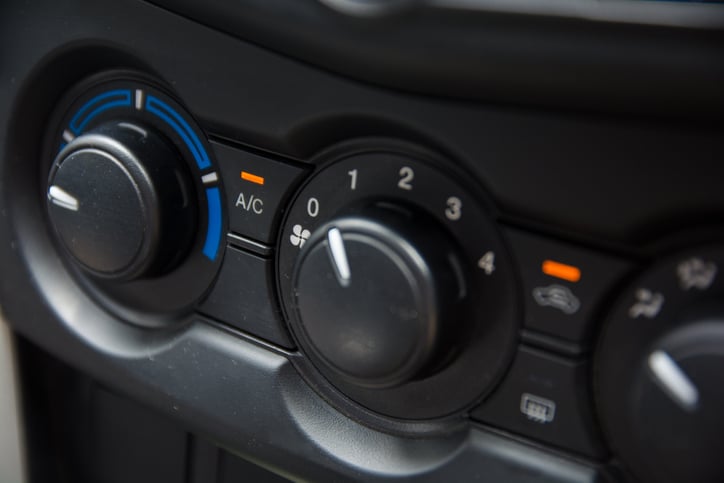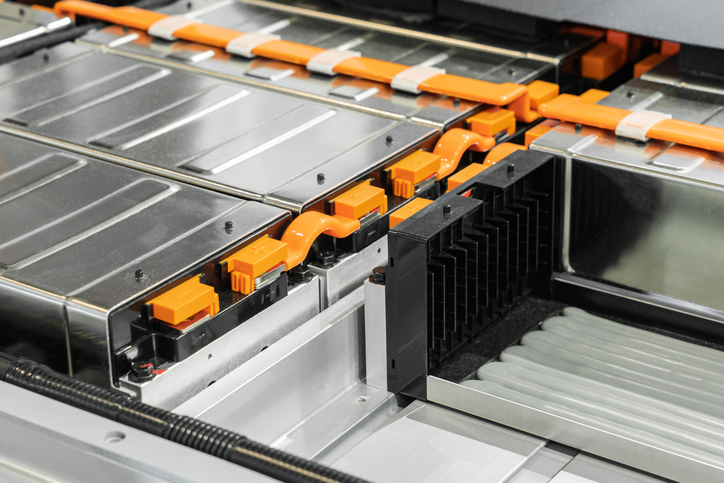How Pressure & Temperature Sensors Improve EV Heat Pumps

When a severe winter storm paralyzed I-95 in Virginia, stranding countless drivers for hours, a critical question arose:
What would have happened if these vehicles were electric?
Given that electric vehicle (EV) batteries are known to be sensitive to extreme temperatures, concerns about their performance in cold weather are understandable.
Journalist Alex Lauer’s real-world test provided a compelling answer. He spent 12 hours in a Ford Mustang Mach-E, with temperatures ranging from 13-24 ℉, maintaining a comfortable cabin temperature using the vehicle's HVAC system. Remarkably, after this prolonged period, the EV retained 75% of its battery charge and a range of 132 miles, significantly outperforming internal combustion engine (ICE) vehicles under similar conditions.
This performance isn't accidental; it’s a testament to the advanced thermal management systems, particularly EV heat pumps assisted by pressure and temperature sensors.
The key to this resilience lies in the sophisticated design of modern EVs, which are engineered for efficiency and rigorously tested in extreme conditions, down to -40 degrees Fahrenheit. A pivotal component in achieving this performance is the EV heat pump. This technology, combined with precise pressure and temperature sensors, represents a significant leap forward in optimizing battery life and range.
EV Heat Pumps: Advanced Comfort & Improved Battery Life
In the world of EV design heat pumps have emerged as an innovative alternative to resistive heaters.
Unlike traditional heating systems, which require significant battery power, EV heat pumps improve energy conservation by recycling excess heat generated by the vehicle’s components. This enhances battery efficiency and extends range, making EVs more viable in cold climates.
Traditional vehicle heating systems use resistive heaters, which convert electrical energy directly into heat. However, this process can quickly drain an EV’s battery, reducing its range. In contrast, an EV heat pump works by leveraging the waste heat produced during normal operation. This allows the vehicle to maintain cabin comfort without tapping into the battery’s energy reserves.
The shift toward using heat pumps as a means of cabin climate control flips the model of heating used by vehicles with an internal combustion engine. Without the waste heat generated by combustion, an EV has to create heat using alternate means.
How Does the Heat Pump Work?
Heat pumps function similarly to reverse air conditioners, transferring heat rather than generating it. The system operates in two loops:
-
Heat capture loop: The first loop circulates a cooling medium—often a refrigerant or coolant—around critical components, like the battery. A “cold plate” attached to the battery draws away excess heat, allowing the fluid to absorb this thermal energy. Next, a coolant pump channels the warmed fluid into a liquid-to-liquid heat exchanger where it meets the second loop.
-
Heat redistribution loop: An evaporator releases the collected heat into the cabin, providing a warm and comfortable interior for passengers. However, in cold weather, the roles can reverse. By altering the direction of refrigerant flow, the system can extract even small amounts of ambient heat from outside air and bring it into the cabin.
The ability of EV heat pumps to reuse available energy significantly reduces battery drain, ensuring that more power is available for driving rather than heating. Rather than using a battery’s energy to generate new electric heat for passenger comfort, an EV can conserve power or use it for other comfort items, such as heated seats and steering wheels.
Pressure and temperature sensors are essential in this process, as they regulate refrigerant flow, pressure levels, and thermal balance to maintain optimal conditions.
Pressure and Temperature Sensors: The Brain Behind EV Heat Pumps
To maximize battery life and ensure optimal climate control, EVs rely on a complex system of pressure and temperature sensors to regulate thermal management. These sensors are critical in maintaining efficiency by continuously monitoring refrigerant conditions and adjusting flow dynamics in real time.
Pressure and temperature sensors optimize EV heat pumps with:
-
Precision control of thermal management: By monitoring refrigerant pressure and temperature at key control points, these sensors enable precise regulation of heat pump operation, ensuring minimal energy loss.
-
Efficient heating and cooling cycles: Sensors help manage the expansion and compression of cooling fluids, optimizing heat exchange while conserving battery power.
-
Dynamic adaptation to environmental conditions: As external temperatures change, sensors adjust system performance to maintain cabin comfort without overloading the battery.
Resource: Want to learn more about the vital role sensors play in EV thermal management? Download our guide today:
Real-World Benefits: More Range and Better Comfort
By leveraging pressure and temperature sensors in an EV heat pump system, manufacturers can significantly reduce the energy consumption needed to maintain a comfortable cabin temperature. Instead of tapping into the battery to produce heat, the vehicle recycles existing thermal energy.
For EV drivers, this translates into tangible benefits:
-
Improved range: With less energy required for heating, the battery retains more charge for driving, up to 31% compared to a PTC resistance heater.
-
Battery longevity: Over time, consistently drawing less power from the battery for heating can slow degradation, potentially extending the overall lifespan of the battery pack.
-
Comfort: Occupants enjoy a more stable interior temperature, as sensor-driven climate control systems adjust in real time to maintain optimal conditions.
While colder temperatures can still reduce an EV’s driving range — by more than 40% in some cases — heat pumps and sensor-driven thermal management can offset a significant portion of that loss. The result is a more reliable and predictable range for drivers, even when outside temperatures plummet.
Sensor Technology for Enhanced EV Performance
Visit our EV/HEV Sensor Resource Hub to learn more:
EV Heat Pumps for Getting More From EV Batteries
While extreme cold remains a challenge for EV performance, the use of EV heat pumps and pressure and temperature sensors has proven to be a highly effective solution. By intelligently regulating thermal energy, EVs are now capable of outperforming their ICE counterparts in harsh winter conditions.
From extended battery life to enhanced driving range, these technologies are paving the way for the next generation of energy-efficient electric vehicles. As innovation continues, EV heat pumps and sensor technology will remain central to ensuring that EVs can operate reliably in any weather condition.
Pair Your EV Heat Pumps With Robust Sensor Technology
Want to optimize your EV system? Schedule a consultation with one of our engineers today.
 (Editor's note: This article was originally published in February 2022 and was updated in February 2025 to reflect current information.)
(Editor's note: This article was originally published in February 2022 and was updated in February 2025 to reflect current information.)





